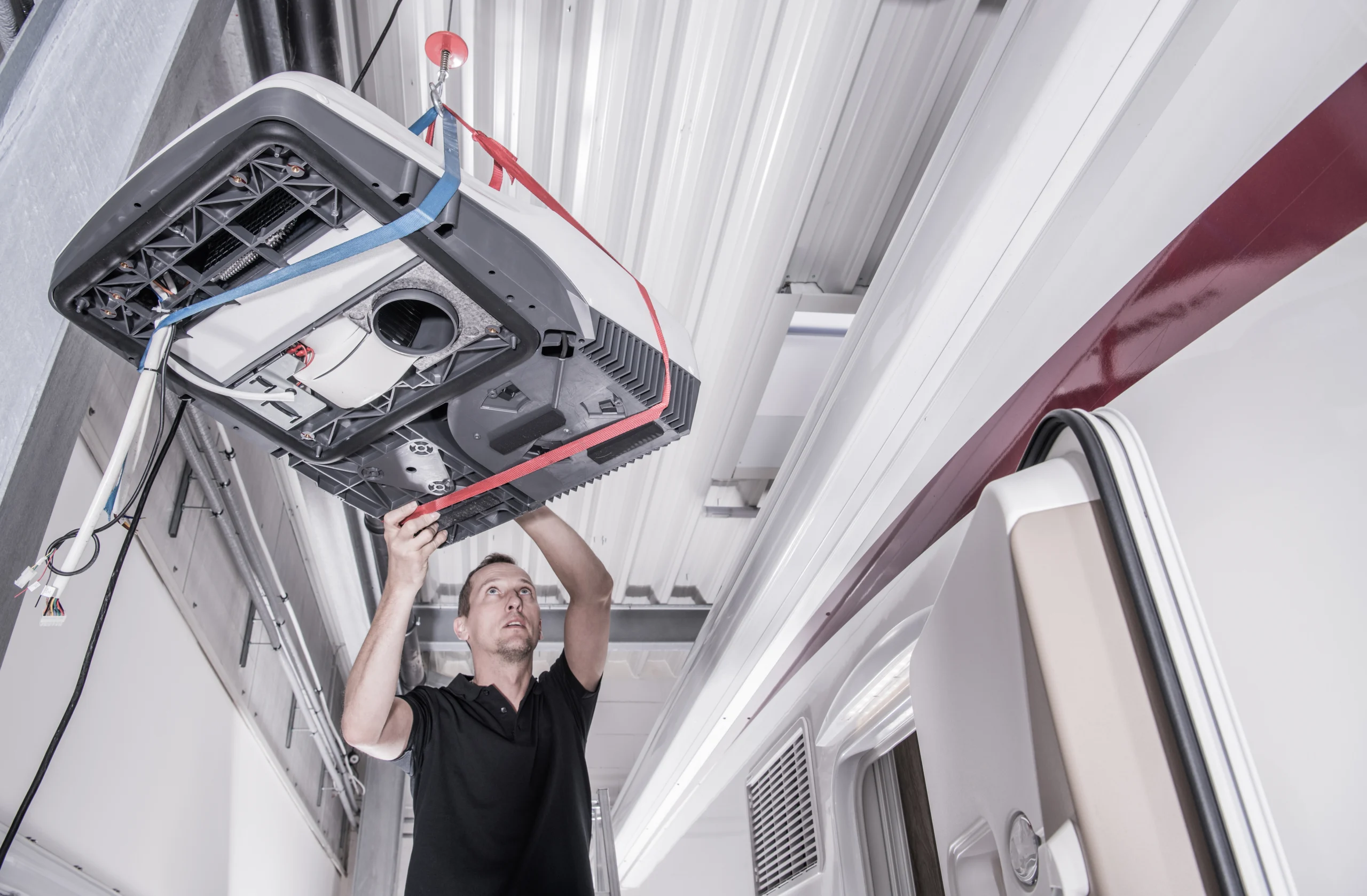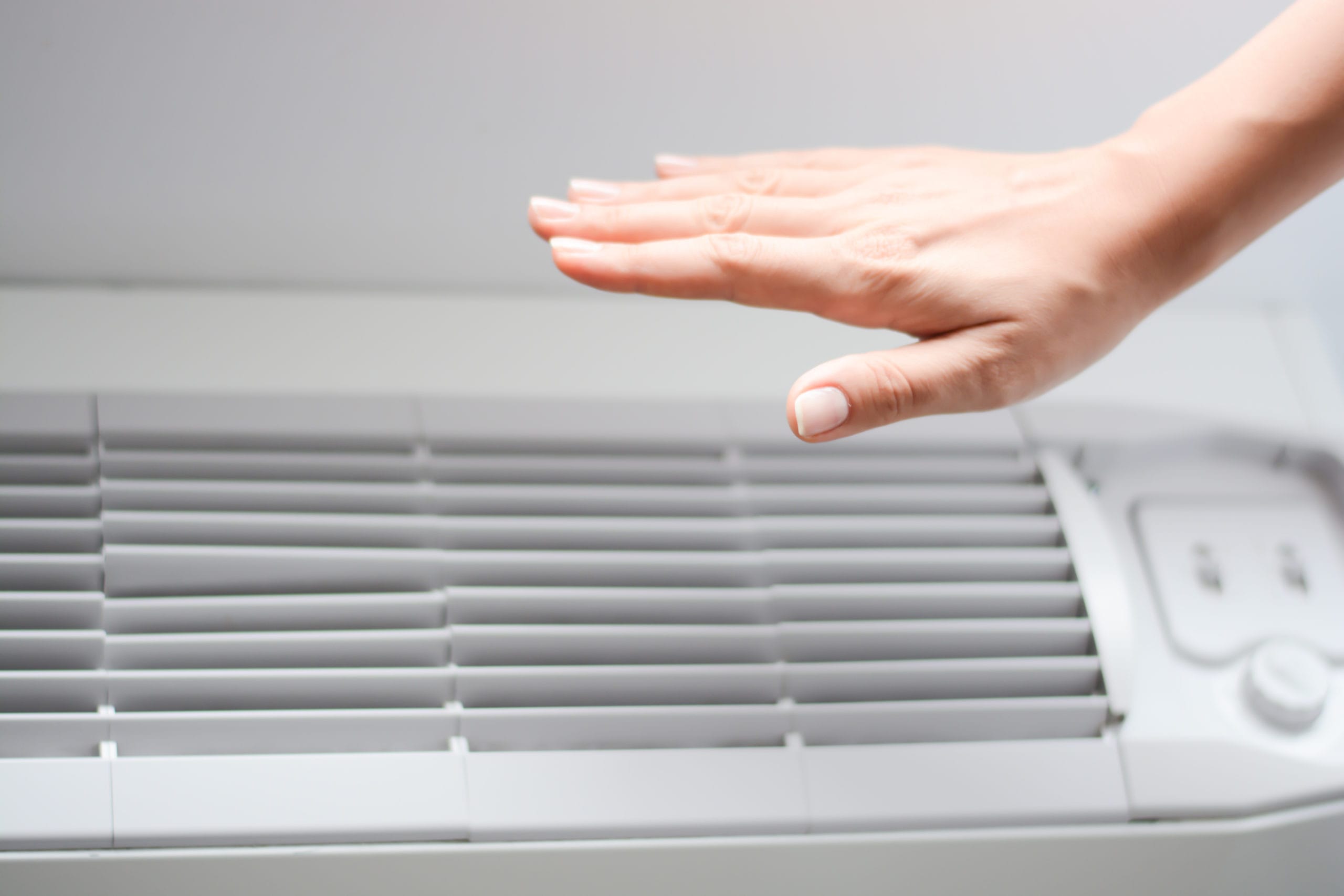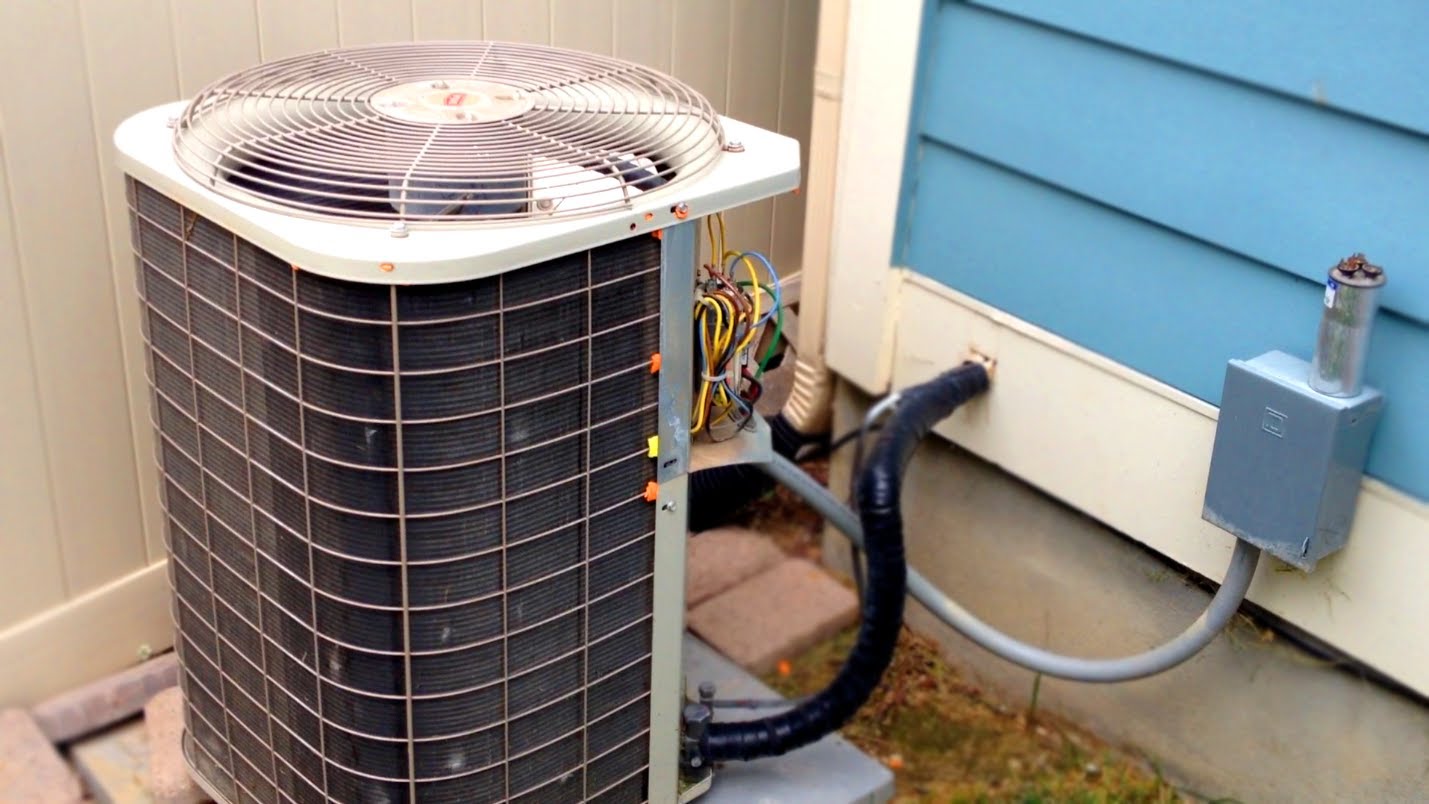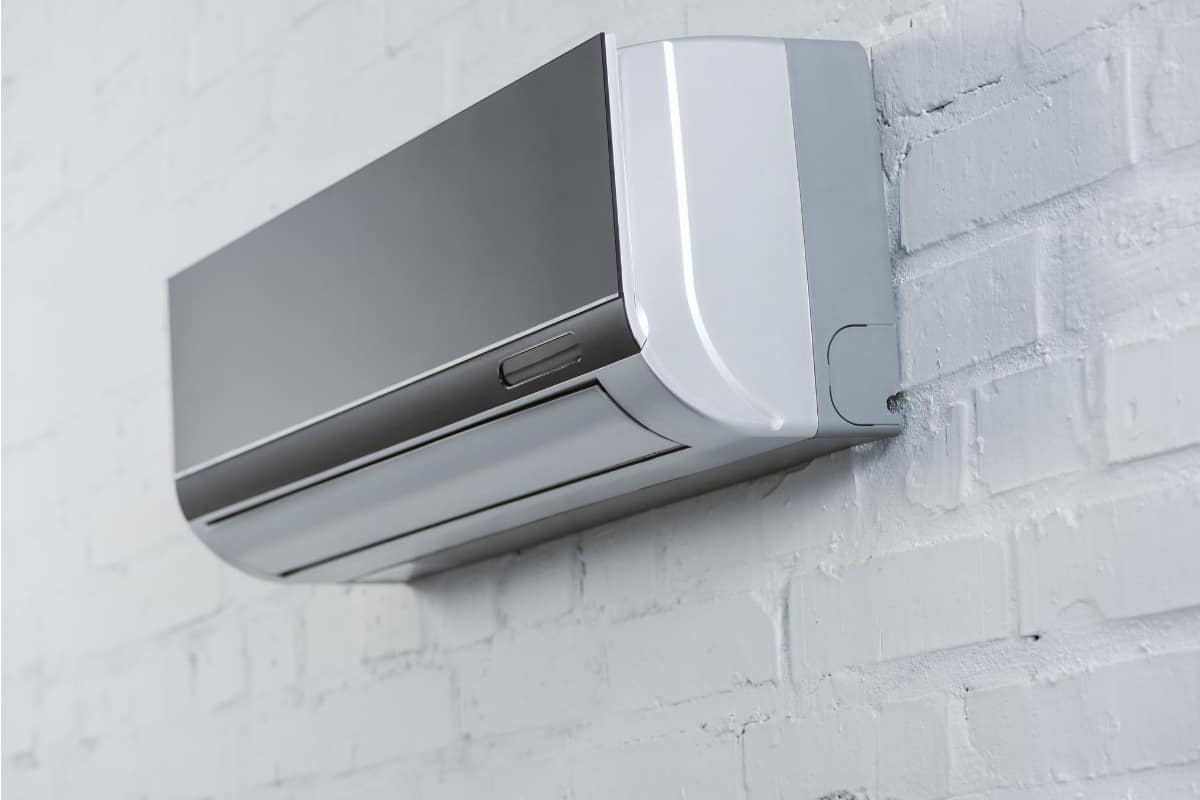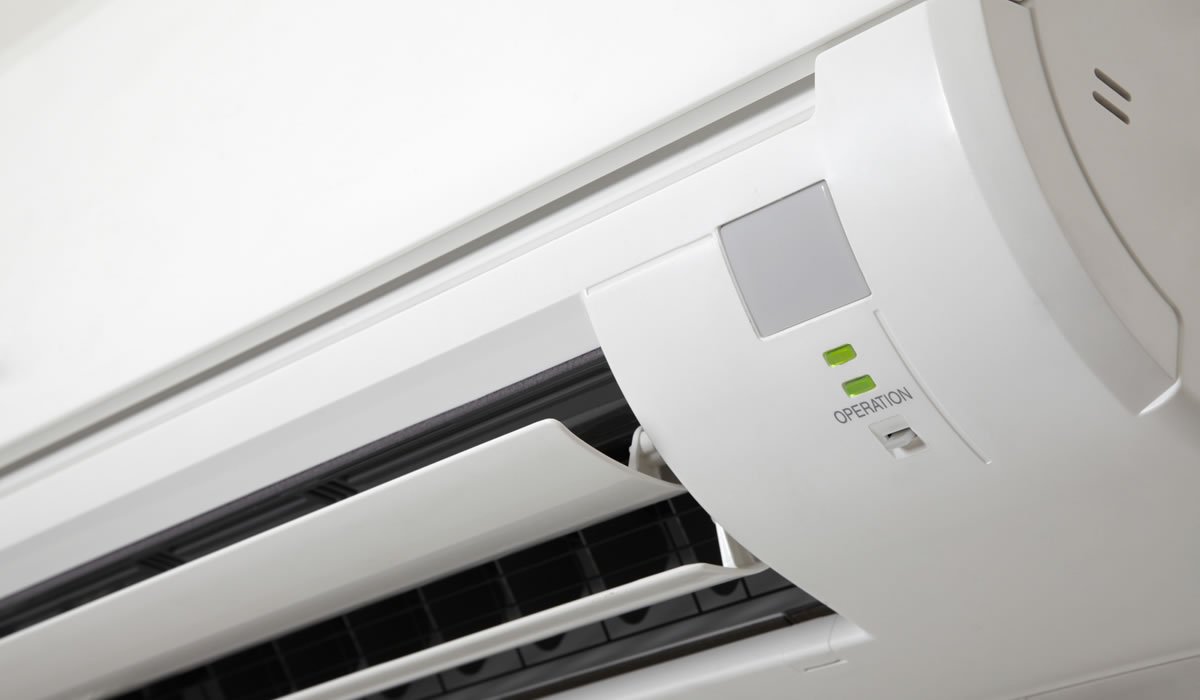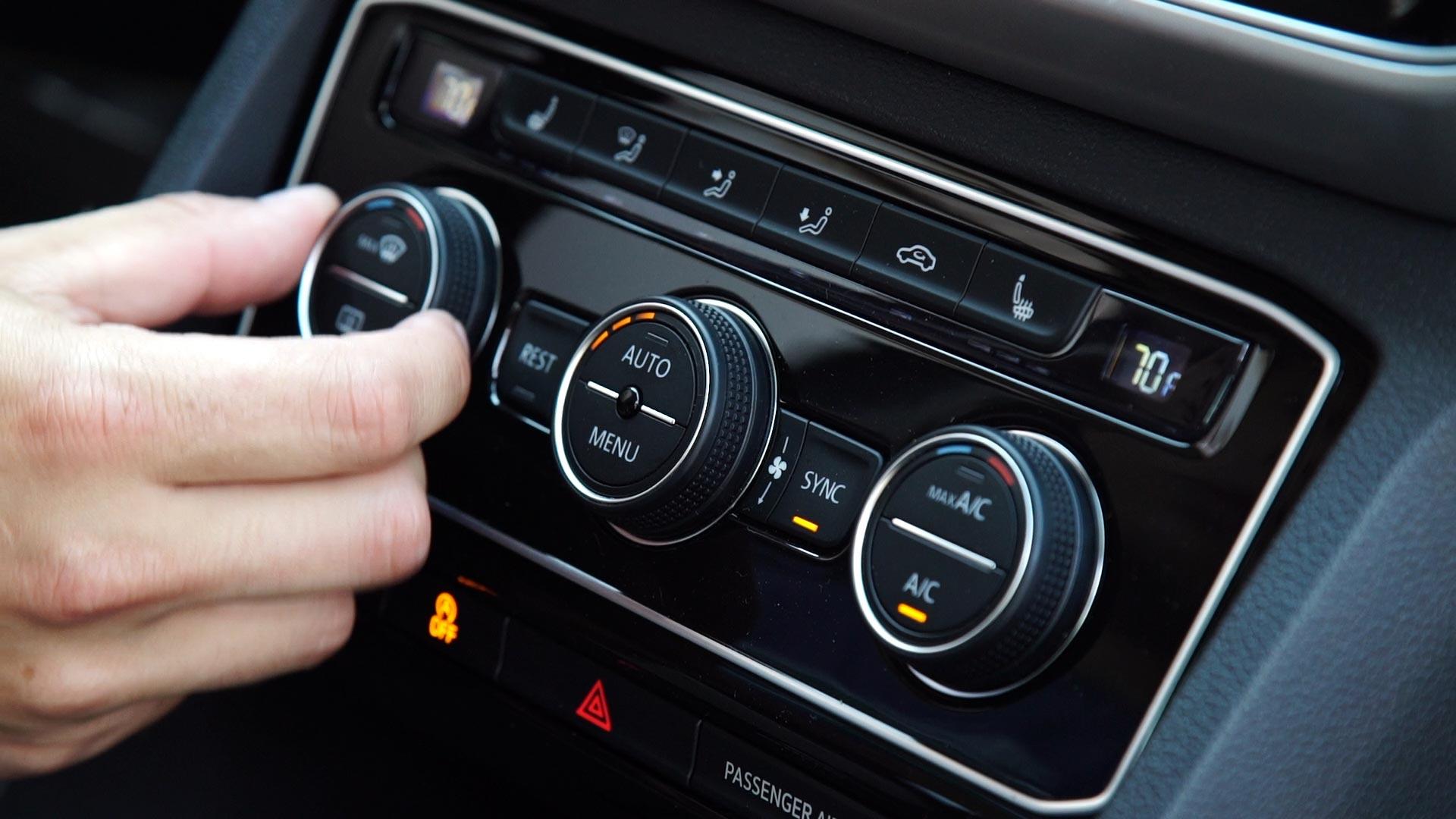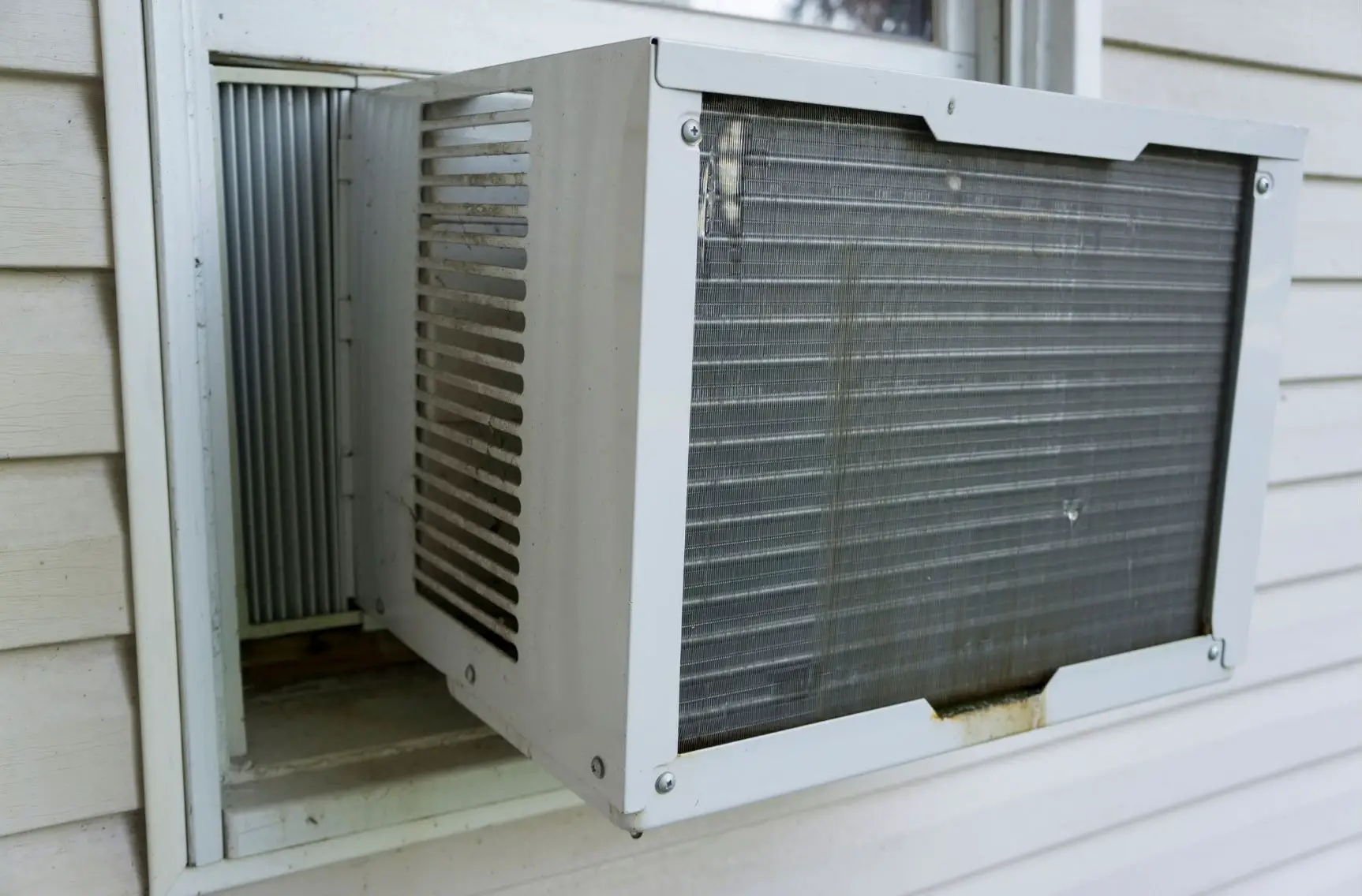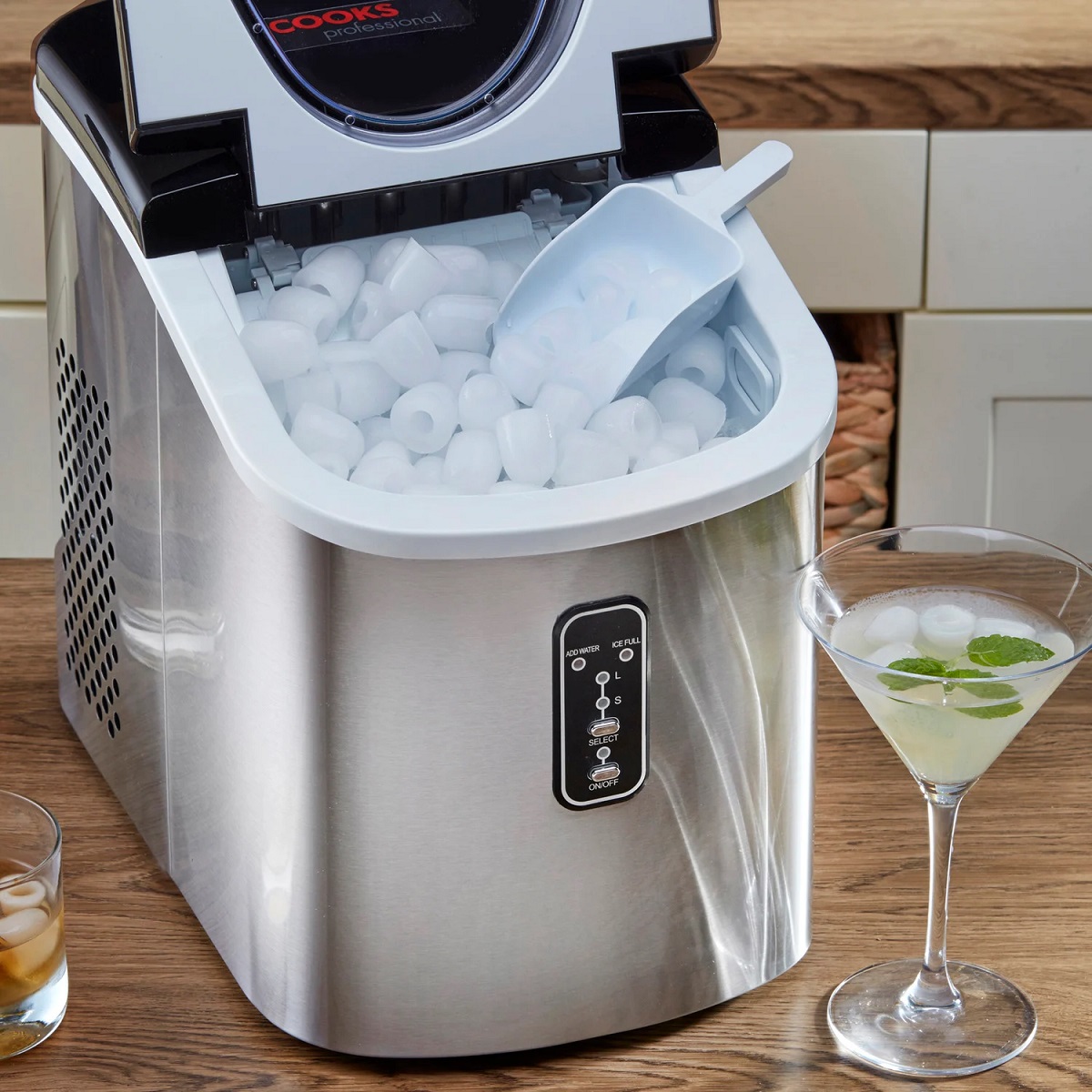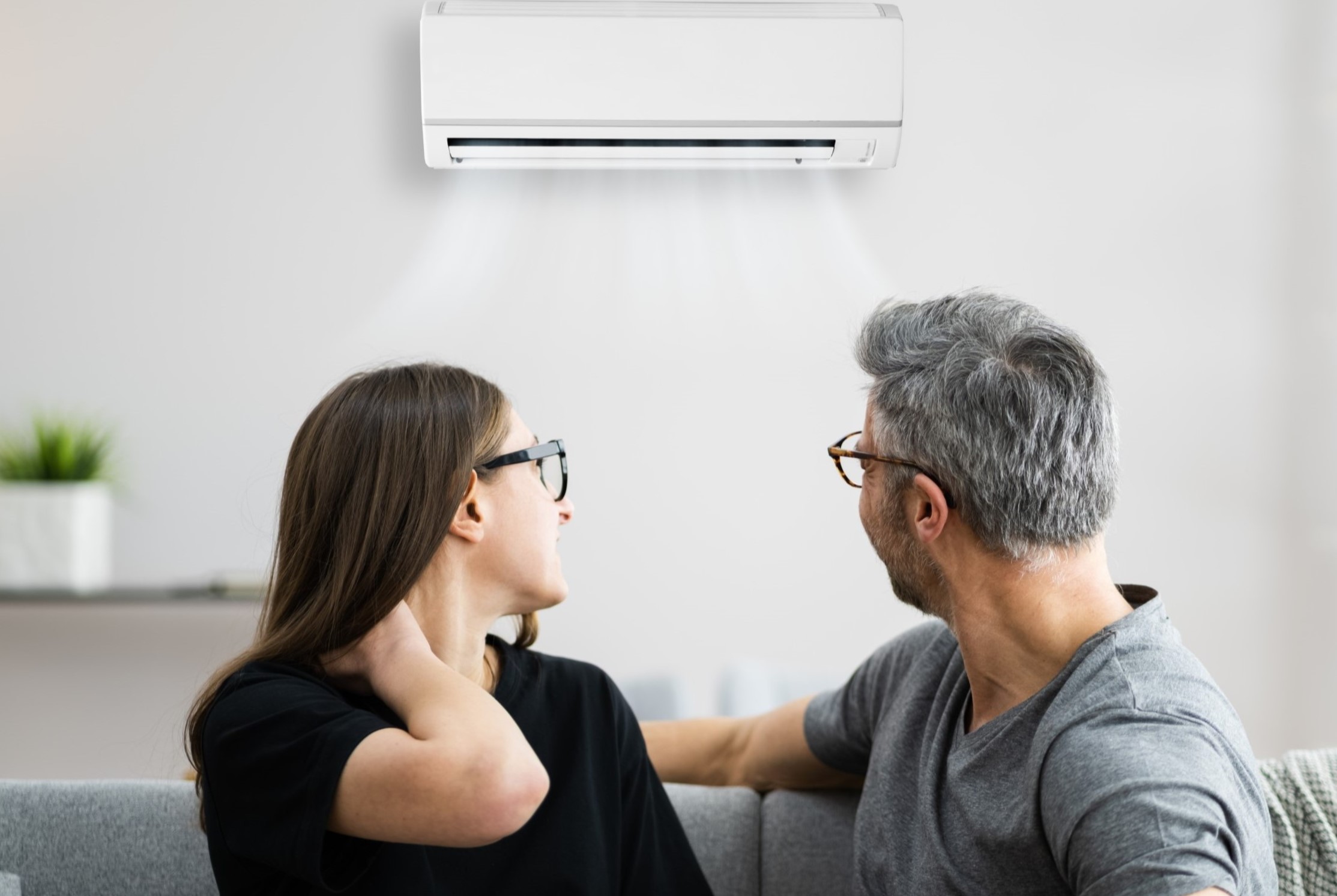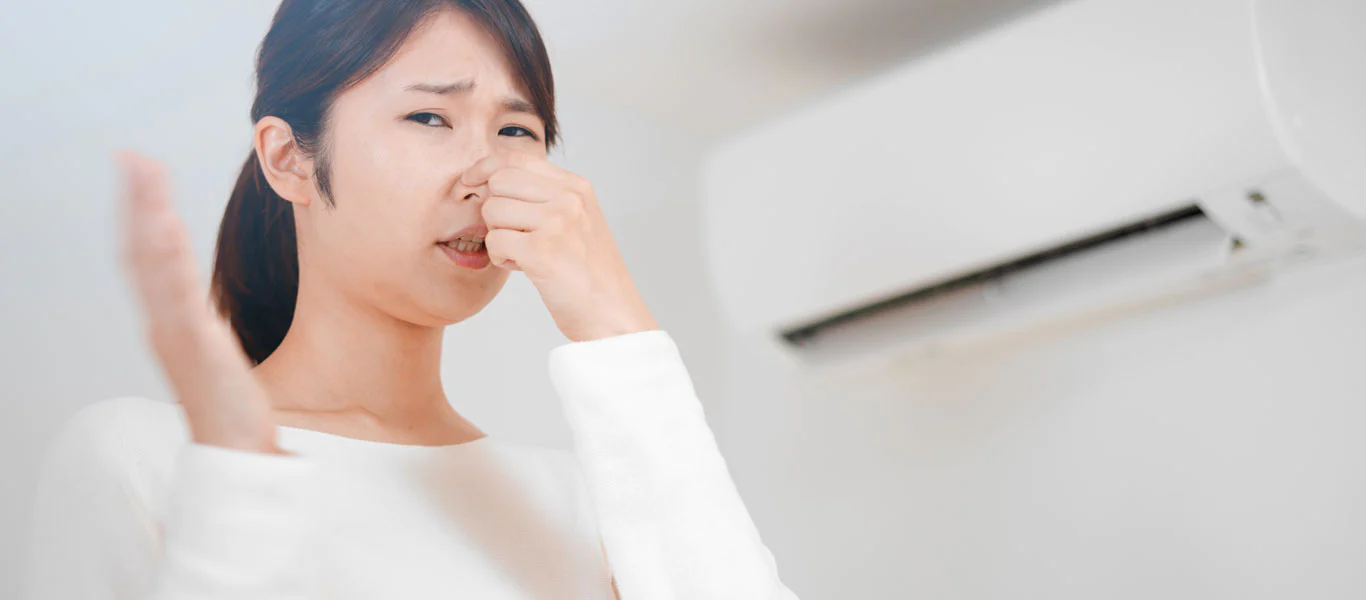Home>Home Maintenance>Why Is There Ice On My Air Conditioner
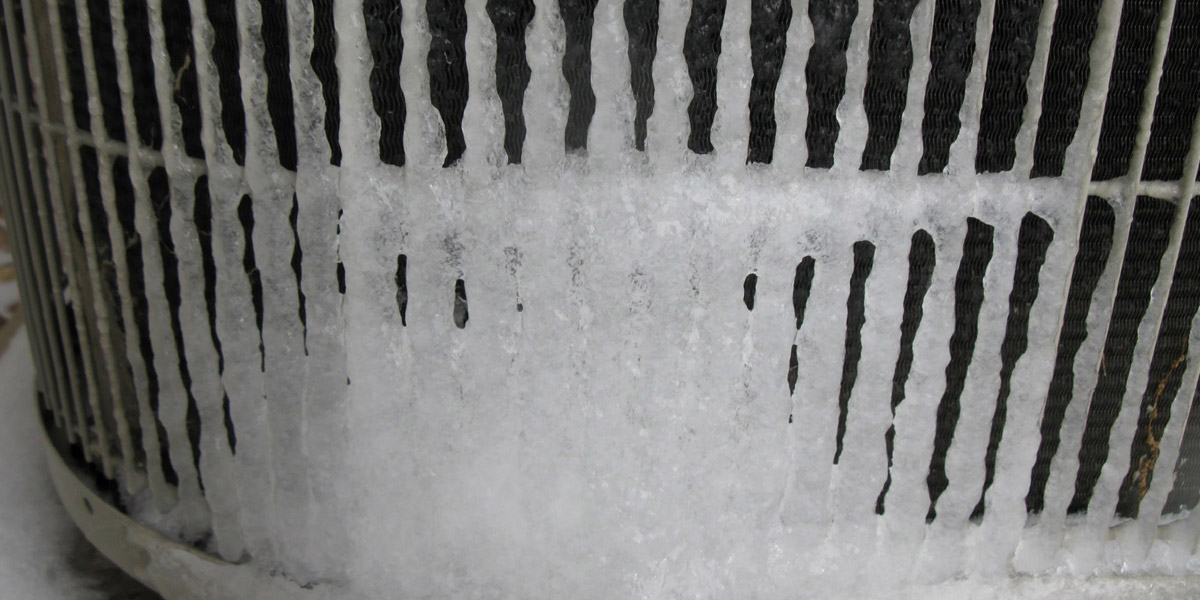

Home Maintenance
Why Is There Ice On My Air Conditioner
Modified: March 7, 2024
Learn why there's ice on your air conditioner and how to prevent it with proper home maintenance.
(Many of the links in this article redirect to a specific reviewed product. Your purchase of these products through affiliate links helps to generate commission for Storables.com, at no extra cost. Learn more)
Introduction
Welcome to the world of air conditioning, where cool comfort meets hot summer days. Air conditioners are a staple in many homes, providing relief from the scorching heat and humidity. However, it’s not unusual to encounter occasional problems with your air conditioner, such as ice formation on the unit. If you’ve ever wondered why there’s ice on your air conditioner, then this article is for you.
Understanding how air conditioners work and the common issues that can arise will help you identify and resolve the problem. In this article, we will dive into the inner workings of air conditioners, explore the causes of ice formation, and provide solutions to prevent it from happening again.
Before we delve into the specifics, let’s get acquainted with the basics of air conditioners. These devices work by removing heat and moisture from indoor spaces, creating a cool and comfortable environment. But how exactly do they do that? Let’s find out.
Key Takeaways:
- Keep air vents unblocked and ensure proper airflow to prevent ice formation on your air conditioner. Regularly clean or replace air filters to maintain efficient cooling and extend the lifespan of your system.
- Address malfunctioning thermostats and low refrigerant levels promptly with professional help to prevent ice buildup and ensure accurate temperature control for a comfortable home.
Read more: Why Is My Air Conditioner Surging
Understanding Air Conditioners
Before we discuss ice formation on air conditioners, it’s important to grasp the fundamental principles of how these cooling systems operate. Air conditioners work on the principle of refrigeration, which involves transferring heat from one place to another.
An air conditioner consists of several key components, including a compressor, condenser coil, evaporator coil, and refrigerant. The compressor is responsible for compressing the refrigerant, which then flows through the condenser coil, releasing heat into the outside air. The cooled refrigerant then enters the evaporator coil, where it absorbs heat from the indoor air and cools it down. Finally, the cooled air is circulated back into the room, providing a refreshing breeze.
It’s important to note that air conditioners not only cool the air but also dehumidify it. As warm air passes over the evaporator coil, moisture in the air condenses and is collected in a drain pan or removed through a drainage system.
Now that we have a basic understanding of how air conditioners work, let’s explore some of the common issues that can occur with these systems.
How Air Conditioners Work
Air conditioners are wonders of modern engineering that keep us cool and comfortable during hot and humid weather. But have you ever wondered how these incredible machines actually work? Let’s take a closer look at the inner workings of air conditioners.
The primary function of an air conditioner is to remove heat from an indoor space and expel it outside, creating a cooler and more comfortable environment. This is achieved through a process called refrigeration.
First, the air conditioner pulls warm air from the room into the system through a vent or a return grille. The air then passes through an air filter to remove any dust or particles before entering the system. The filtered air then flows over the evaporator coil, which contains a refrigerant.
The refrigerant, typically a chemical compound like Freon or Puron, is in a low-pressure state and at a low temperature. As the warm air passes over the cold evaporator coil, the refrigerant absorbs the heat from the air, causing the air to cool down. The cooled air is then circulated back into the room, while the warm refrigerant is sent to the compressor.
The compressor plays a crucial role in the refrigeration process. It compresses the low-pressure refrigerant gas, increasing its temperature and pressure. This high-pressure gas then moves to the condenser coil, located outside the house.
As the hot refrigerant flows through the condenser coil, a fan blows air over the coil, dissipating the heat and allowing the refrigerant to release the absorbed heat into the outside environment. The refrigerant, now in a liquid state, returns to the evaporator coil to repeat the cooling cycle.
In addition to cooling, air conditioners also dehumidify the air. As the warm air passes over the cold evaporator coil, moisture in the air condenses into water droplets, which are collected in a drain pan or drained through a pipe.
Overall, air conditioners work by continuously cycling refrigerant through the system, absorbing heat from the indoor air, releasing it outside, and cooling the air in the process. The result is a comfortable and refreshing environment, even on the hottest summer days.
Common Issues with Air Conditioners
Despite their reliable performance, air conditioners can sometimes experience issues that affect their functionality. Understanding these common problems can help you identify and address them promptly, ensuring your air conditioner operates at its best. Here are some of the most common issues with air conditioners:
- Lack of Cooling: One of the most frustrating problems is when your air conditioner fails to provide sufficient cooling. This can be due to various issues, such as a malfunctioning compressor, low refrigerant levels, a clogged air filter, or a faulty thermostat.
- Uneven Cooling: If certain areas or rooms in your home are cooler than others, it could be a sign of inadequate airflow. Blockages in the air ducts, closed or blocked air vents, or an improperly sized air conditioner can cause uneven cooling.
- Frequent Cycling: If your air conditioner constantly turns on and off without properly cooling the space, it may be short-cycling. This can be caused by a malfunctioning thermostat, incorrect refrigerant charge, or an oversized air conditioner.
- Strange Noises: Unusual noises like grinding, knocking, or squealing coming from your air conditioner can indicate a problem. Loose components, worn-out belts, or motor issues are common culprits behind these noises.
- Water Leaks: A leaking air conditioner can be a sign of a clogged condensate drain line, a damaged drain pan, or a refrigerant leak. It is important to address water leaks promptly to prevent water damage and mold growth.
- Foul Odors: If your air conditioner emits unpleasant odors, it could be due to mold or mildew growth in the unit or ductwork. Dirty air filters or stagnant water in the drain pan can also contribute to foul smells.
Regular maintenance and timely repairs are essential for keeping your air conditioner in optimal condition and preventing these common issues. By addressing them promptly, you can ensure your air conditioner continues to provide effective cooling and comfort throughout the hot summer months.
Ice Formation on Air Conditioners
One of the most concerning issues you may encounter with your air conditioner is ice formation on the unit. It may seem counterintuitive to have ice on a cooling system, but it can happen for various reasons. Understanding the causes of ice formation is crucial for resolving the issue and preventing further damage to your air conditioner.
Ice formation typically occurs on the evaporator coil, which is responsible for extracting heat from the indoor air. When the airflow over the evaporator coil is restricted or when certain components are malfunctioning, the moisture in the air can condense and freeze on the coil, leading to ice buildup.
However, it’s important to note that seeing ice on your air conditioner doesn’t necessarily indicate a problem with the refrigeration system. Instead, it signals an underlying issue that needs to be addressed to restore proper functioning and prevent further damage to your unit.
There are several common causes of ice formation on air conditioners:
- Insufficient Airflow: When there is a lack of adequate airflow over the evaporator coil, the temperature drops significantly, causing the moisture in the air to freeze. This can be due to dirty or clogged air filters, blocked or closed air vents, or obstructed air ducts.
- Low Refrigerant Levels: The refrigerant plays a crucial role in the cooling process. If there’s a leak or a low refrigerant charge, the evaporator coil may not receive enough heat to prevent freezing. Regular refrigerant maintenance and leak detection are essential to prevent this issue.
- Dirty Air Filters: Air filters play a vital role in maintaining proper airflow and preventing dust and debris from accumulating on the evaporator coil. When the air filters are dirty or clogged, it restricts the airflow, leading to ice formation.
- Blocked or Restricted Air Vents: Obstructed air vents can impede the flow of warm air into the system, causing the evaporator coil to become too cold. Ensure that all air vents are clear and unobstructed to maintain proper airflow.
- Malfunctioning Thermostat: A faulty thermostat can cause the air conditioner to run longer than necessary, resulting in excessive cooling and potential ice formation on the evaporator coil. Regularly check and calibrate your thermostat to ensure it is functioning correctly.
Addressing the underlying cause of ice formation is crucial to prevent further damage to your air conditioner. In the next section, we will explore various solutions to resolve ice formation and restore your air conditioner’s performance.
Read more: Why Is My Air Conditioner Not Turning On
Causes of Ice Formation
Ice formation on your air conditioner can be a frustrating and potentially damaging issue. To effectively resolve this problem, it’s important to understand the root causes that lead to ice formation. Let’s explore some of the common causes:
- Insufficient Airflow: One of the primary causes of ice formation is insufficient airflow over the evaporator coil. When the airflow is restricted, the temperature of the coil drops, causing the moisture in the air to freeze. This can be due to dirty or clogged air filters that impede proper air circulation or blocked air vents and ducts that restrict the flow of warm air.
- Low Refrigerant Levels: Another common cause of ice formation is low refrigerant levels. The refrigerant is responsible for absorbing heat from the air as it passes over the evaporator coil. When the refrigerant levels are low due to a leak or improper charge, the coil can become too cold, leading to ice buildup.
- Dirty Evaporator Coil: A dirty evaporator coil can also contribute to ice formation. Over time, dust and debris can accumulate on the coil’s surface, insulating it and preventing it from properly absorbing heat. This can cause the coil to become excessively cold and result in ice formation.
- Inadequate Maintenance: Lack of proper maintenance can also lead to ice formation. Neglecting regular cleaning, servicing, and inspections of your air conditioner can allow issues like dirty filters, clogged coils, or malfunctioning components to go unnoticed, increasing the risk of ice formation.
- Inadequate Temperature Settings: Setting your thermostat too low can cause the air conditioner to run continuously, which can lead to overcooling and ice formation on the evaporator coil. It’s important to set the temperature to a reasonable and comfortable level to prevent this issue.
- Humidity Levels: High humidity levels can also contribute to ice formation. When the air is excessively humid, the moisture in the air can quickly condense and freeze on the cold evaporator coil. Proper dehumidification is essential to prevent ice buildup.
Identifying the specific cause of ice formation is crucial for effectively addressing the issue. By understanding the underlying causes, you can take appropriate measures to resolve them and ensure the proper functioning of your air conditioner. In the following sections, we will discuss various solutions to prevent and resolve ice formation on your air conditioner.
Insufficient Airflow
Insufficient airflow over the evaporator coil is one of the primary causes of ice formation on an air conditioner. When the airflow is restricted, the temperature of the coil drops significantly, causing moisture in the air to freeze on the coil’s surface. This issue can be caused by various factors, but the good news is that it can often be resolved with some simple troubleshooting steps.
Here are some common culprits of insufficient airflow and how to address them:
- Dirty or Clogged Air Filters: Air filters are designed to trap dust, pollen, and other airborne particles to keep the air in your home clean. However, over time, these filters can become clogged with debris, restricting the airflow to the evaporator coil. To fix this issue, locate the air filters in your air conditioning system (usually located in the return air duct or near the air handler) and clean or replace them as needed. It’s generally recommended to clean or replace air filters every one to three months.
- Blocked or Closed Air Vents: If you notice that certain air vents in your home are not blowing air or have limited airflow, it could be due to the vents being blocked or closed. Make sure that all air vents are open and unobstructed, allowing unrestricted airflow throughout your home. If you have furniture or other objects blocking the vents, rearrange them to create proper airflow.
- Obstructed Air Ducts: Blocked or obstructed air ducts can also hinder proper airflow to the evaporator coil. Check for any visible signs of blockage or damage, such as collapsed ducts or debris buildup, and clear the obstruction or consider hiring a professional duct cleaning service to clean your ductwork. Properly sealed and insulated ductwork is also important for optimizing airflow, so ensure that your ducts are well-sealed and insulated.
- Faulty Blower Motor: A malfunctioning blower motor can hamper the airflow in your air conditioning system. If you suspect that your blower motor is not running at its full capacity or is not working at all, it’s best to consult with a professional HVAC technician. They can diagnose and repair any issues with the blower motor to restore proper airflow.
By addressing the factors that contribute to insufficient airflow, you can promote better cooling performance and prevent ice formation on your air conditioner. Regular maintenance, including keeping air filters clean, ensuring open vents, and checking for any obstructions in the air ducts, will help maintain optimal airflow and reduce the risk of ice buildup.
In the next sections, we will discuss additional causes of ice formation and their respective solutions to help you effectively resolve this issue and keep your air conditioner running smoothly.
Low Refrigerant Levels
Low refrigerant levels are another common cause of ice formation on air conditioners. The refrigerant, a chemical compound responsible for absorbing heat from the air, flows through the evaporator coil to cool the air. When the refrigerant levels are low, the evaporator coil may become too cold, leading to condensation and ice buildup.
Here are some possible causes of low refrigerant levels and how to address them:
- Refrigerant Leak: The most common reason for low refrigerant levels is a refrigerant leak. Over time, vibrations, wear and tear, or corrosion can cause small holes or cracks in the refrigerant lines, leading to leaks. Detecting a refrigerant leak can be challenging, so it’s best to hire a professional HVAC technician who has the expertise and tools to locate and repair the leak.
- Improper Refrigerant Charge: Another reason for low refrigerant levels is an improper initial refrigerant charge during installation or servicing. It’s crucial that the refrigerant charge is accurately measured and adjusted according to the manufacturer’s specifications. If you suspect an incorrect charge, consult a professional technician to assess and adjust the refrigerant levels as necessary.
- Manufacturing Defect: In rare cases, a manufacturing defect in the air conditioning system may cause a refrigerant leak or lead to low refrigerant levels. If your air conditioner is relatively new or under warranty, contact the manufacturer or a qualified technician to assess the system and address any potential defects or issues.
Solving low refrigerant levels requires expertise and specialized equipment. It’s important to involve a professional HVAC technician who can accurately diagnose the issue and address it effectively. They will be able to identify any refrigerant leaks, repair or replace damaged components, and recharge the system with the appropriate amount of refrigerant.
Remember, refrigerants are harmful to the environment, so it’s crucial to handle them responsibly. A qualified technician will not only ensure your air conditioner operates efficiently but also adhere to environmental regulations when handling refrigerants.
By addressing and resolving low refrigerant levels, you can prevent ice formation on your air conditioner and restore its cooling performance. In the following sections, we will explore additional causes of ice formation and their respective solutions to help you troubleshoot and maintain your air conditioning system.
Dirty Air Filters
Dirty air filters can contribute to a variety of problems with your air conditioning system, including ice formation. Air filters play a vital role in maintaining good indoor air quality by trapping dust, pollen, and other airborne particles. However, over time, these filters can become clogged with debris, inhibiting proper airflow and reducing the efficiency of your system.
Here’s how dirty air filters can lead to ice formation and how to address the issue:
1. Restricted Airflow: When air filters are dirty and clogged, they obstruct the flow of air into your air conditioning system. Restricted airflow over the evaporator coil can cause it to become too cold, leading to condensation and ice formation. As a result, your air conditioner may struggle to cool your home effectively.
2. Inefficient Cooling: Dirty air filters reduce the efficiency of your air conditioning system. When the airflow is restricted, the system has to work harder to cool your home, resulting in higher energy consumption and increased wear and tear on the components. This can lead to reduced cooling capacity and even system breakdowns if left unaddressed.
Fortunately, resolving the issue of dirty air filters is relatively straightforward:
- Regular Maintenance: To prevent dirty air filters from causing problems, it’s vital to establish a regular maintenance routine. Check your air filters at least once a month and clean or replace them as needed. If you have pets or live in a dusty environment, you may need to clean or replace the filters more frequently.
- Cleaning Air Filters: If your air filters are reusable, clean them according to the manufacturer’s instructions. Typically, this involves rinsing them with water or using a vacuum cleaner to remove dirt and debris. Allow the filters to dry completely before reinstalling them.
- Replacing Air Filters: If you have disposable air filters, replace them with new ones. Make sure to choose the correct size and type of filter that is compatible with your air conditioning system. Follow the manufacturer’s guidelines or consult with a professional if you’re unsure about the right filters for your system.
Regularly cleaning or replacing dirty air filters will not only improve your indoor air quality but also promote better airflow and prevent ice formation. It will also help your air conditioning system run more efficiently, save energy, and extend its lifespan.
In the next sections, we will discuss additional causes of ice formation and their respective solutions to help you troubleshoot and maintain your air conditioner.
Check and replace your air filter regularly. A dirty filter restricts airflow, causing the evaporator coil to freeze. This can lead to ice buildup on your air conditioner.
Read more: Why Is My Air Conditioner Crackling
Blocked or Restricted Air Vents
Blocked or restricted air vents can significantly hinder the performance of your air conditioning system and contribute to ice formation. Proper airflow is essential for the efficient cooling of your home, and when air vents are obstructed, it disrupts the balance and causes inadequate cooling in certain areas. This can lead to the evaporator coil becoming too cold, resulting in condensation and ice buildup.
Here’s how to identify and address the issue of blocked or restricted air vents:
1. Obstructions: Check each air vent in your home to ensure they are not blocked by furniture, drapes, or any other objects. Make sure the vents are clear and allow unrestricted airflow. Sometimes, even a small obstruction can impede the proper flow of air, causing cooling issues and ice formation on the evaporator coil.
2. Blocked Air Return Vents: Air return vents are responsible for pulling air from your home into the air conditioning system. If these vents are obstructed or partially blocked, it limits the amount of warm air reaching the system, causing the evaporator coil to become too cold. Ensure that air return vents are clear of any obstacles and allow unrestricted airflow.
3. Improperly Closed Vents: In some cases, vents may be closed or partially closed, restricting the airflow. This is particularly common in rooms that are not frequently used or in areas where individuals may attempt to control temperature independently. Check all the vents in your home and ensure they are open fully to allow for proper airflow.
If you discover blocked or restricted air vents, here are some steps you can take to address the issue:
- Move Obstructions: Rearrange furniture, curtains, and objects that may be blocking the vents. Ensure that the vents have a clear path for air to flow freely. It’s important to maintain at least a few inches of space around the vents to avoid airflow obstruction.
- Open Closed Vents: If you find closed or partially closed vents, adjust them to the fully open position to allow for proper airflow. This will help distribute the cooled air evenly throughout your home.
- Consider Vent Covers: In some cases, if you have specific rooms that are consistently warmer or cooler, you may consider using vent covers or diverters to redirect the airflow. These devices can help distribute the air more effectively and prevent temperature imbalances.
By ensuring that your air vents are unobstructed and allowing sufficient airflow, you can improve the performance of your air conditioning system and minimize the risk of ice formation. Proper airflow helps maintain consistent cooling throughout your home and prevents strain on the evaporator coil.
In the next sections, we will discuss additional causes of ice formation and their respective solutions to help you troubleshoot and maintain your air conditioner.
Malfunctioning Thermostat
A malfunctioning thermostat can cause issues with your air conditioning system, including ice formation. The thermostat is responsible for sensing the temperature in your home and signaling the air conditioner to turn on or off to maintain the desired temperature. If the thermostat is not functioning properly, it can lead to excessive cooling and, in turn, cause the evaporator coil to become too cold, resulting in condensation and ice buildup.
Here are some signs of a malfunctioning thermostat and steps to address the issue:
1. Inaccuracy: If you notice inconsistencies between the set temperature on your thermostat and the actual temperature in your home, it may indicate a problem with the thermostat. If the thermostat is reading the temperature incorrectly, it could cause the air conditioner to run longer than necessary and contribute to ice formation.
2. Constant Running: If your air conditioner runs continuously, even when the desired temperature has been reached, it could be a sign of a malfunctioning thermostat. This can lead to overcooling and excessive icing on the evaporator coil. In some cases, the thermostat may not signal the air conditioner to turn off, causing it to run indefinitely.
3. Unresponsiveness: A malfunctioning thermostat may fail to respond when you adjust the temperature settings. If you notice that changing the settings on your thermostat does not result in any changes in your air conditioning system’s operation, it could indicate a faulty thermostat.
To address a malfunctioning thermostat issue, consider the following steps:
- Calibration: Sometimes, a simple calibration of the thermostat can rectify minor issues. Refer to the manufacturer’s instructions to learn how to recalibrate your specific thermostat model.
- Battery Replacement: If your thermostat is battery-operated, low battery levels can cause erratic behavior. Replace the batteries with fresh ones to ensure proper functioning.
- Thermostat Reset: In some cases, performing a thermostat reset can help resolve minor glitches. Refer to the manufacturer’s instructions or seek the assistance of a professional technician to perform a proper reset.
- Professional Inspection and Replacement: If the above steps do not solve the issue, it may be necessary to have a professional HVAC technician inspect and diagnose the problem. They can determine if the thermostat needs repair or replacement.
A malfunctioning thermostat can negatively impact your air conditioning system’s performance and contribute to issues like ice formation. By addressing the thermostat issue promptly, you can ensure that your air conditioner operates efficiently and effectively without causing unnecessary icing on the evaporator coil.
In the next sections, we will explore additional causes of ice formation and their respective solutions to help you troubleshoot and maintain your air conditioner.
Solutions to Ice Formation
Ice formation on air conditioners can be a persistent problem, but there are several solutions that can help resolve this issue. By addressing the underlying causes and taking appropriate measures, you can prevent ice buildup and ensure your air conditioner operates at its best. Here are some solutions to combat ice formation:
1. Increase Airflow: Adequate airflow is crucial to preventing ice formation. Ensure that air vents and returns are clear of any obstructions and that furniture or drapes do not block the airflow. Additionally, consider using fan settings or ceiling fans to improve air circulation within your home.
2. Check and Recharge Refrigerant Levels: Low refrigerant levels can contribute to ice formation. If you suspect a refrigerant leak or low charge, consult a professional HVAC technician who can detect and repair any leaks and recharge the system with the appropriate refrigerant levels.
3. Clean or Replace Air Filters: Dirty air filters restrict airflow, leading to ice formation. Clean or replace your air filters regularly to prevent debris from accumulating and obstructing the airflow. Follow the manufacturer’s recommendations for cleaning or replacement intervals.
4. Unblock Air Vents: Ensure proper airflow by removing any obstructions from air vents. Make sure that all vents are fully open and unobstructed to allow for adequate air circulation throughout your home.
5. Repair or Replace Malfunctioning Thermostat: A malfunctioning thermostat can cause excessive cooling and ice formation. Calibrate, reset, or replace the thermostat as necessary to ensure accurate temperature readings and proper signaling to the air conditioning system.
6. Maintain Proper Humidity Levels: High humidity levels can contribute to ice formation. Use a dehumidifier to remove excess moisture from the indoor air and help prevent condensation and freezing on the evaporator coil.
It’s important to note that if ice has already formed on your air conditioner, do not attempt to chip or scrape it off. Instead, turn off the system and allow the ice to melt naturally. Once the ice has melted, follow the recommended solutions above to prevent recurrence.
Regular maintenance and proactive measures are key to preventing ice formation and keeping your air conditioner running efficiently. It’s also beneficial to schedule periodic professional inspections to ensure that your air conditioning system is in good working order and to address any potential issues before they worsen.
By implementing these solutions, you can safeguard your air conditioner from ice formation, extend its lifespan, and enjoy consistent and cool comfort in your home.
Increase Airflow
Inadequate airflow is a common culprit behind ice formation on air conditioners. Insufficient airflow can cause the evaporator coil to become too cold, leading to condensation and ice buildup. By taking measures to increase airflow, you can prevent ice formation and ensure optimal cooling efficiency. Here are some solutions to enhance airflow:
1. Clear Obstructions: Check that all air vents, both supply and return, are clear of any obstructions. Furniture, curtains, or other objects placed in front of the vents can impede airflow. Ensure that vents have sufficient space to allow for unobstructed flow of air.
2. Open Air Vents: Make sure that all air vents in your home are fully open. Some homeowners mistakenly close off vents in certain rooms to redistribute airflow, but this can disrupt the balance of your HVAC system. Opening all air vents ensures proper airflow throughout your home.
3. Clean Air Vents: Over time, dust and debris can accumulate in air vents, reducing the amount of airflow. Regularly clean the vents to remove any blockages. You can use a vacuum cleaner or a soft brush to gently remove dust and dirt from the vents.
4. Remove Blockages: Check for any blockages in the air ducts. If you notice visible signs of blockage, such as collapsed or crushed ducts, or if you suspect a significant obstruction, it’s best to hire a professional technician to inspect and address the issue. They have the knowledge and tools to safely access and clear blocked ductwork.
5. Use Fans: Utilize ceiling fans or portable fans to improve overall air circulation in your home. Fans help to distribute cool air more effectively, ensuring that it reaches all areas of the room. This can also help alleviate strain on the air conditioner and promote a more comfortable environment.
6. Seal Air Leaks: Check for air leaks around windows, doors, and ductwork. Sealing these leaks enhances the efficiency of your cooling system by preventing cool air from escaping and warm air from entering your home. Apply weatherstripping or caulking where needed to seal any gaps.
7. Maintain a Clean Environment: Regularly dust and vacuum your home to prevent the buildup of dust and debris that can clog air filters and obstruct airflow. By maintaining a clean environment, you reduce the risk of airflow restrictions and help your air conditioning system operate effectively.
Increasing airflow is essential for preventing ice formation on your air conditioner and ensuring efficient cooling performance. By implementing these solutions, you can improve the overall airflow in your home, maintain optimal comfort, and extend the lifespan of your air conditioning system.
Remember, if you continue to experience ice formation or have concerns about your HVAC system, it’s best to consult with a professional HVAC technician who can provide expert advice and assistance.
Read more: Why Is My Air Conditioner Squeaking
Check and Recharge Refrigerant Levels
Proper refrigerant levels are crucial for the optimal functioning of your air conditioning system. Low refrigerant levels can contribute to ice formation on the evaporator coil, impeding the cooling process. Checking and recharging refrigerant levels is an important step in preventing ice buildup and maintaining the efficiency of your air conditioner. Here’s what you need to know:
1. Hire a Professional: Checking and recharging refrigerant levels requires specialized equipment and expertise. It’s best to hire a professional HVAC technician who has the necessary knowledge and tools to handle refrigerants safely and accurately.
2. Refrigerant Leak Detection: The first step is to determine if there is a refrigerant leak. Technicians use electronic leak detectors, ultraviolet dye, or other methods to locate leaks in the refrigerant lines. Detecting and repairing leaks is crucial for ensuring that your air conditioning system maintains the proper refrigerant levels.
3. Repairing Refrigerant Leaks: If a leak is found, the technician will repair it before proceeding with the recharge. The repair process may involve replacing or repairing damaged components, such as valves, coils, or connections. It’s important to fix any leaks promptly to prevent further refrigerant loss and potential damage to the system.
4. Recharging Refrigerant: Once the leaks are repaired, the technician will proceed with recharging the refrigerant. This involves adding the precise amount of refrigerant specified by the manufacturer for your specific air conditioning system. Overcharging or undercharging can impact the system’s performance, so it’s essential to rely on a trained professional for this task.
5. Regular Maintenance: To maintain proper refrigerant levels, it’s crucial to schedule regular maintenance visits with a professional HVAC technician. During these visits, the technician will check the refrigerant levels and perform any necessary adjustments or recharges. Regular maintenance helps detect and address refrigerant issues early on, reducing the risk of ice formation and other cooling problems.
Remember, refrigerants are hazardous substances that require careful handling and disposal. It’s essential to rely on a certified professional who can comply with environmental regulations and safely work with refrigerants.
Checking and recharging refrigerant levels is a technical task that should be left to experienced professionals. By ensuring proper refrigerant levels, you can optimize the cooling performance of your air conditioning system, prevent ice formation, and prolong the lifespan of your equipment.
If you suspect any refrigerant-related issues or if you notice ice formation on your air conditioner, contact a trusted HVAC technician to diagnose and address the problem promptly.
Clean or Replace Air FiltersAir filters play a vital role in maintaining the efficiency and performance of your air conditioning system. Over time, air filters can become clogged with dust, dirt, and other airborne particles, hindering proper airflow and reducing the effectiveness of your system. A clogged air filter can contribute to ice formation on the evaporator coil, leading to cooling issues. Regularly cleaning or replacing air filters is a simple yet effective solution to prevent ice buildup and promote optimal cooling. Here’s what you need to know:
1. Inspecting Air Filters: Regularly inspect your air filters to assess their condition. Locate the air filter panels, usually found near the return air duct or close to the air handler unit. Take note of the type and size of filters currently in place to ensure you purchase the correct replacements, if needed.
2. Cleaning Reusable Filters: If you have reusable air filters, they can typically be cleaned by rinsing them with water or using a vacuum cleaner with a brush attachment. Remove the filters from the housing and gently wash away the accumulated dirt and debris. Allow the filters to dry completely before re-installing them.
3. Replacing Disposable Filters: Disposable air filters cannot be cleaned and should be replaced periodically. Follow the manufacturer’s recommendations or consider replacing them every one to three months, depending on usage and environmental conditions. Remember to choose filters that match the correct size and type specified for your air conditioning system.
4. Benefits of Clean Air Filters: Clean air filters allow for proper airflow, ensuring that your air conditioner can run efficiently. They help to remove dust, pollen, pet dander, and other airborne particles, improving indoor air quality. Moreover, clean air filters keep the evaporator coil free from debris, preventing the coil from getting too cold and causing ice formation.
5. Regular Maintenance Schedule: Establish a regular maintenance schedule for cleaning or replacing air filters. This helps to ensure that your air conditioning system continues to operate at its best. Write down the replacement dates on a calendar or set reminders on your phone to stay on track with filter maintenance.
6. Outdoor Unit Filters: In addition to the air filters within your home, some air conditioning systems have filters located in the outdoor unit. These filters can also become dirty and obstruct airflow. If your system includes outdoor unit filters, check and clean or replace them as needed.
By cleaning or replacing air filters regularly, you can improve the overall airflow of your air conditioning system and prevent ice formation on the evaporator coil. Additionally, clean filters help to maintain good indoor air quality and prolong the lifespan of your equipment.
Remember, if you have any concerns or questions about your air filters or need assistance with maintenance, you can always consult with a professional HVAC technician for guidance.
Unblock Air Vents
Blocked air vents can significantly impact the performance of your air conditioning system, leading to inadequate cooling and potential ice formation on the evaporator coil. Proper airflow is crucial for efficient and effective cooling throughout your home. By unblocking air vents, you can ensure unrestricted airflow and prevent issues associated with restricted airflow. Here’s what you need to know:
1. Inspect Air Vents: Take a moment to visually inspect all the air vents in your home. Ensure that they are not blocked or covered by furniture, drapes, or other objects. Move any obstructions away from the vents to allow for unobstructed airflow.
2. Check for Closed Vents: Sometimes, vents may be accidentally closed or partially closed. This restricts the airflow and inhibits proper cooling. Check all the vents in your home and ensure that they are fully open. Adjust any closed vents to the open position to allow for adequate airflow.
3. Redirect Air Flow: If you have furniture or objects obstructing the vents, consider rearranging them to redirect the air flow. Ensure that the vents have sufficient space for the air to flow freely. Move furniture such as sofas, beds, or cabinets away from in front of the vents.
4. Remove Dust and Debris: Over time, dust and debris can accumulate in and around the air vents, obstructing airflow. Use a vacuum cleaner with a brush attachment or a soft brush to gently remove any dust or debris from the vents. Regular cleaning will help maintain proper airflow.
5. Consider Vent Deflectors: In certain situations where furniture arrangement or room layout restricts airflow, you can use vent deflectors or diverters to redirect the air flow. These devices attach to the vents and guide the cooled air in specific directions, ensuring proper distribution throughout the room.
6. Professional Duct Cleaning: If you suspect that there may be significant blockages or obstructions in the air ducts, it’s advisable to hire a professional duct cleaning service. They have the expertise and specialized equipment to thoroughly clean and remove any contaminants or debris that may be hindering airflow.
By unblocking air vents, you improve the overall airflow of your air conditioning system, ensuring efficient cooling and preventing ice formation. Proper airflow not only enhances comfort but also helps your air conditioner operate more effectively and reduces strain on the system.
Remember, if you are unsure about unblocking air vents or if you suspect any underlying issues with your HVAC system, it’s best to consult with a professional HVAC technician who can provide expert guidance and advice.
Repair or Replace Malfunctioning Thermostat
A malfunctioning thermostat can disrupt the proper functioning of your air conditioning system and contribute to ice formation. The thermostat is responsible for sensing the temperature and signaling the air conditioner to turn on or off to maintain the desired level of cooling. If the thermostat is not working correctly, it can cause excessive cooling and result in the evaporator coil becoming too cold, leading to condensation and ice buildup. Repairing or replacing a malfunctioning thermostat is essential to ensure accurate temperature control and prevent cooling issues. Here’s what you need to know:
1. Signs of a Malfunctioning Thermostat: Watch out for signs that indicate your thermostat may be malfunctioning. These signs may include inconsistent temperature readings, constant running of the air conditioner, unresponsiveness to temperature adjustments, or inaccurate temperature control.
2. Calibration and Resetting: Start by calibrating and resetting your thermostat. Check the manufacturer’s instructions for specific guidelines on how to recalibrate or reset your thermostat model. Sometimes, a simple calibration or reset can resolve minor issues and restore proper functionality.
3. Battery Replacement: If your thermostat is battery-operated, low battery levels can cause malfunctions. Replace the batteries with fresh ones to ensure the thermostat is properly powered. This simple step may rectify issues related to power supply.
4. Testing and Diagnosis: If calibration, reset, or battery replacement does not solve the issue, it’s advisable to have a professional HVAC technician perform diagnostic tests. They have the expertise and tools to accurately diagnose problems with the thermostat, including wiring issues, faulty temperature sensors, or internal component malfunctions.
5. Repairing the Thermostat: In some cases, the malfunctioning thermostat may be repairable. A skilled technician can identify and fix issues such as loose wiring connections or malfunctioning temperature sensors. They may replace damaged parts or recommend specific repairs to restore the functionality of the thermostat.
6. Thermostat Replacement: If the thermostat cannot be repaired or if the malfunctioning is recurrent, replacing the thermostat may be necessary. Consider replacing it with a programmable or smart thermostat, which offers advanced temperature control features, energy-saving options, and convenient programmable settings.
Consulting a professional HVAC technician is crucial for accurately diagnosing thermostat issues and determining the best course of action. They can guide you through the repair or replacement process and ensure that the new thermostat is properly installed and calibrated.
Repairing or replacing a malfunctioning thermostat is essential for maintaining accurate temperature control and preventing cooling issues such as ice formation. It allows your air conditioning system to operate effectively and efficiently, providing you with optimal comfort and minimizing energy waste.
If you suspect any thermostat-related problems or if you need assistance with thermostat repairs or replacement, contact a trusted HVAC technician for expert advice and service.
Read more: Why Is My Air Conditioner Rattling
Conclusion
Ice formation on air conditioners can be a frustrating and concerning issue, but understanding its causes and implementing the right solutions can help you prevent and resolve this problem effectively. From insufficient airflow and low refrigerant levels to dirty air filters, blocked air vents, and malfunctioning thermostats, each issue plays a role in the formation of ice on the evaporator coil. By addressing these underlying causes, you can maintain optimal cooling performance and extend the lifespan of your air conditioning system.
Increasing airflow by unblocking air vents, cleaning or replacing air filters, and ensuring proper ventilation throughout your home promotes efficient cooling and prevents ice buildup. Regular maintenance, including checking and recharging refrigerant levels, inspecting and repairing any leaks, and calibrating or replacing malfunctioning thermostats, is essential for peak performance of your air conditioner.
Remember, when addressing these issues, it’s always recommended to seek the assistance of a qualified HVAC technician. They have the expertise, tools, and knowledge to accurately diagnose problems and provide effective solutions.
By taking proactive measures and providing regular care for your air conditioning system, you can enjoy consistent and comfortable cooling, reduce energy consumption, and prolong the lifespan of your equipment. Preventing ice formation not only ensures efficient performance but also maintains good indoor air quality and safeguards your investment in a reliable and effective air conditioning system.
If you have any concerns or questions regarding ice formation or the maintenance of your air conditioner, do not hesitate to reach out to a professional. They can provide tailored advice and assistance to help you keep your air conditioning system in optimal condition, ensuring a cool and comfortable environment for years to come.
Frequently Asked Questions about Why Is There Ice On My Air Conditioner
Was this page helpful?
At Storables.com, we guarantee accurate and reliable information. Our content, validated by Expert Board Contributors, is crafted following stringent Editorial Policies. We're committed to providing you with well-researched, expert-backed insights for all your informational needs.
